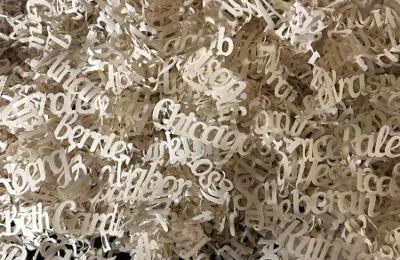 WHAT do the following have in common?
WHAT do the following have in common?
Surgery. Music. Dispute resolution. Art. Construction design. Leather crafts. Slaughter. Veterinary medicine. Knot-tying.
Hint: the common denominator in all this is religious.
As in Jewish religious.
Think about it. Judaism has many specialties. Any Jew is dependent on a number of specialists. Put another way, Judaism offers people with a wide variety of talents and interests the opportunity to fill a special role.
There is the mohel. He specializes in circumcision. He is a surgeon.
There is the cantor, whose speciality is music. Likewise, the Torah reader and the shofar blower.
The dayyan, the rabbinic judge, specializes, among other things, in settling disputes between people.
Calligraphy is art, and this has its Jewish specialist, too, the scribe. In beautiful, arresting script, he writes mezuzzot or an entire Torah scroll on parchment. He writes the selected paragraphs from the Torah on the parchments that are placed inside the hollow compartments of the tefilin boxes.
The mikveh experts specialty is contsruction design.
Leather craftsmanship? Why, that would be the maker of tefilin boxes, which begin as a single, flat piece of cowhide which, without ever being cut, is worked and worked until it forms a square leather box. One type of box contains a single, hollow compartment; the other type of box contains four narrow, hollow compartments again, all while remaining one piece of leather.
Then there is the shochet, whose specialty is ritual slaughter.
And the bodek, who is an expert on the anatomy of kosher species, who determines whether they are diseased, thus unkosher.
Knot-tying? As in the Boy Scouts? That would be the expert in tying the knots of the tzitzit on the tallit and the knot of the head tefilin (variations on the latter are quite complicated).
Judaism, you might say, has something for everyone.
I CALL your attention to a book on one of these specialties, the calligraphic art of the scribe. It is a buyers guide to mezuzzot, the Torah scroll and tefilin. Amply illustrated, the book is extremely user-friendly, and also includes learned annotations in notes.
People talk about Jewish unity. I know of no stronger and more unifying link than the Torah scroll.
All over the world, the Torah scroll is prepared according to the same specifications. The beauty and power of the scroll derive, in part, from them. (The other part, of course, is the Torahs meaning.)
Have you ever been curious about what makes a Torah scroll a Torah scroll? The buyers guides chapter 10 answers 15 questions. Perhaps a surprise to many, the essential obligation concerning a Torah scroll is a Jews obligation to write one, or to commission one. Given the very high cost of a Torah, several questions immediately arise, such as:
Can you fulfill your obligation by writing one single letter into a new scroll?
Can you fulfill your obligation by buying a second-hand scroll?
If you contribute to the purchase of a scroll, does that fulfill your obligation?
And then the scroll itself.
There is a new way of writing a Torah scroll, via silk screening. Is this valid?
Is there a preferred size for a Torah scroll? Is a very small one just as valid as a regular-sized one?
What are the prescribed margins for a Torah scroll? If these margins are not adhered to, is the Torah scroll invalid?
Must the first word or letter at the top of each column be the same?
What are those small lines atop many letters in a Torah scroll? Are they merely decorative, or are they required?
Under each line in a Torah scroll is a straight linear indentation, which guides the placement of each letter in the Torah. Are these indentations merely decorative, or are they required?
Must the wooden sticks on which the Torah scroll is wound be made of wood?
Must a scribe immerse in the mikveh before writing the name of G-d in a Torah scroll?
Must a Torah scroll be written in sequence?
How many mistakes invalidate a Torah scroll? Must it be perfect?
This last question is the only one I shall answer: Yes, a Torah scroll must be perfect. If even a single one of its more than 300,000 letters is missing or written wrongly, the entire scroll is invalid and may not be read from.
With that level of perfection, one understands the power and unifying effect of the scroll.
As for all the other questions about a Torah scroll, consult Reuvain Mendlowitzs book: Inside STAM [Sefer Torah, Tefilin, Mezuzzot]: A Complete Buyers Guide, with notes edited by Binyomin Prenzlau (Israel Bookshop Publications, 2012).
While youre at it, feast yourself on similar questions about the Megillah (read on Purim), mezuzzot, tefilin, the different styles of calligraphy, the professional requirements to be a scribe, which doorways require a mezuzzah and which do not, and computer checking of a Torah scroll.
Because the book is illustrated, youre never left guessing what the question or the answer is. The book is also amply indexed, has a glossary, a bibliography and a list of authorities cited.
All in all, a beautiful window into one of Judaisms specialties: art.
Copyright © 2012 by the Intermountain Jewish News
















